Menu
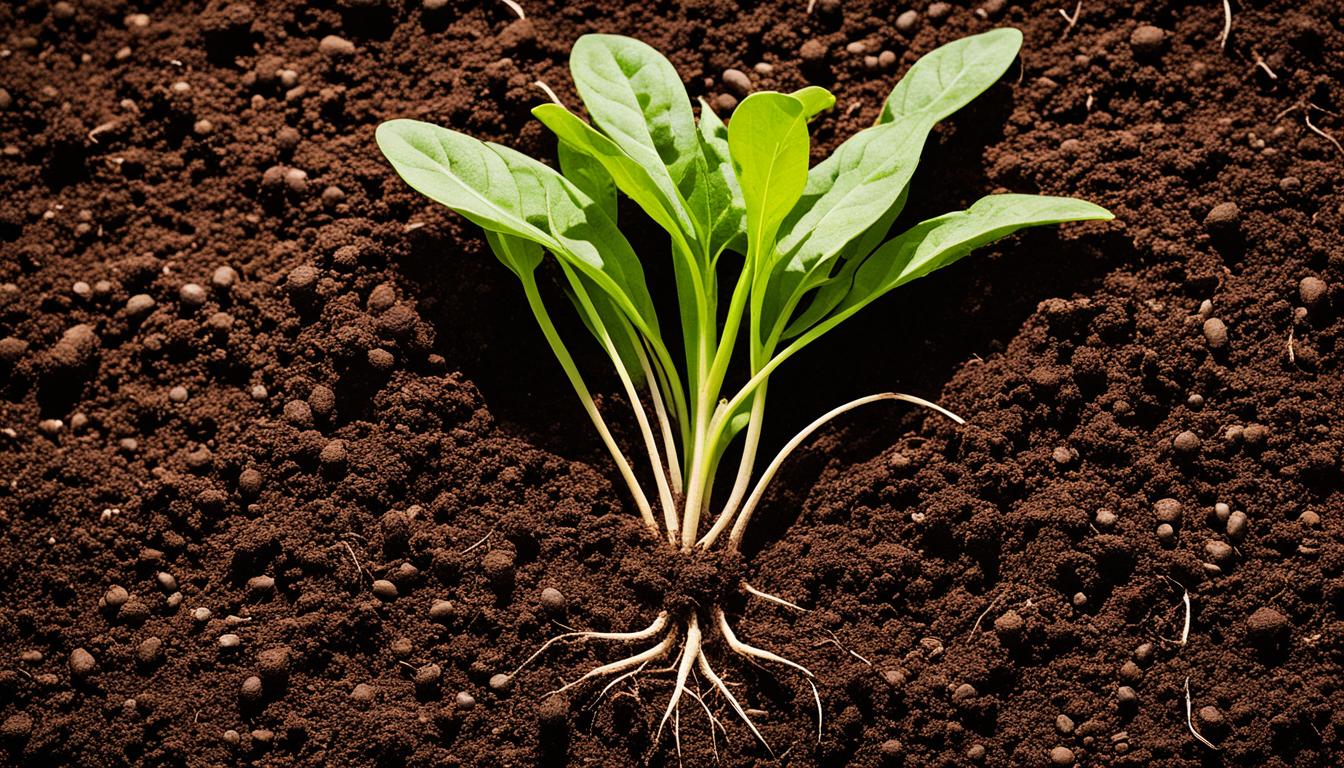
“The nation that destroys its soil destroys itself.” – Franklin D. Roosevelt
Our goal at the Soil Health Institute is to spread the use of regenerative soil health systems. These methods help store carbon and cut down on greenhouse gases. They also improve water quality. Using soil health technology helps farms make more money. It also makes them better at handling droughts, gives plants more nutrients, and helps insects like bees. On top of that, it stops plant diseases.
We work with other groups that care about the land. For example, we help companies like Kula Bio that make affordable fertilisers. We also learn from places like the University of Connecticut about soil health. By working together, we make sure the land is good for clean water, helps fight climate change, and supports more plant and animal life. This helps secure food for the planet.
Soil health is key for farming that lasts, helping keep water, nutrients, and the environment healthy. A big part of the world’s plants and animals, more than 25%, lives in the soil. Think about it: 95% of what we eat comes from the ground. This impacts over 2 billion people. They don’t get enough vitamins and minerals from their food.
It’s crucial to keep soil healthy for more food and to keep us all fed. But, over half of the farm soils we use are not in good shape. This is because of problems like too much farming, pollution, and not enough care. By 2050, these issues could cost us all $23 million in lost food and income.
Soil is great at storing carbon, making it a big player in fighting climate change. Healthy soil holds more carbon than the air we breathe. But when soil gets sick, it starts to release greenhouse gases.
| Indicators of Soil Health Preservation |
|---|
| Soil organic matter |
| Physical characteristics |
| Chemical characteristics |
| Biological characteristics |
To keep soil healthy, we need to follow some important rules. Like, let plants grow all year. Don’t mess with the soil too much. Keep it covered with plants. And make sure there are lots of different living things in the soil. Doing things like changing which crops we plant every year can make the soil’s tiny life more varied. This helps keep the soil itself healthy.
Choosing the right fertilisers is also key. It stops important nutrients from leaching away into the water or air. This helps the soil stay fertile and our food plentiful.
So, looking after our soil is more than just for farmers. It keeps our air and water clean. Helps plants and animals thrive. And solidifies the ground for our future farming efforts.
Soil quality monitoring systems are now key in farming. They use many technologies, from basic kits to smart sensors. These tools help farmers make better choices and grow more food.
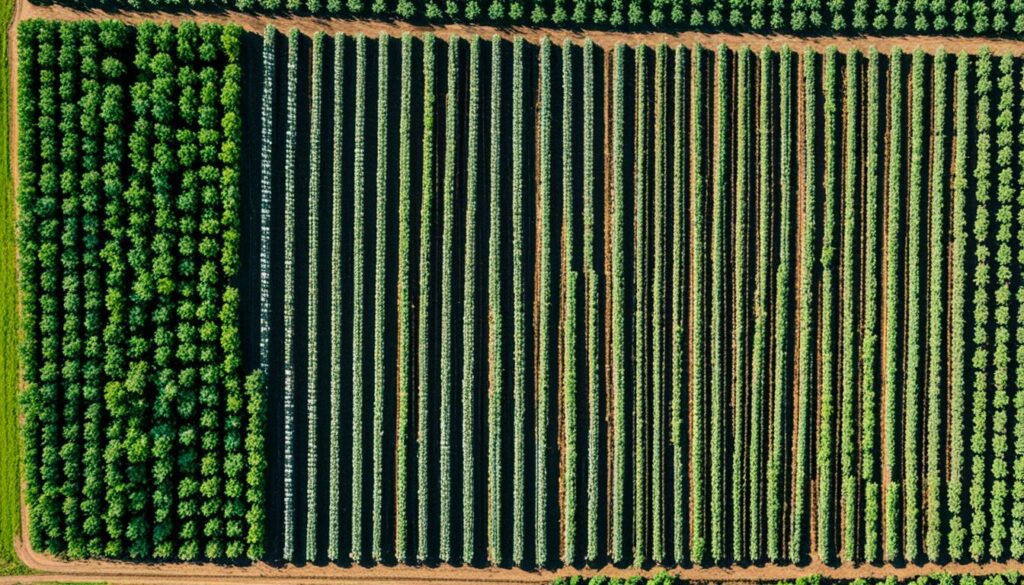
There are many kinds of systems for checking soil quality:
The smart sensors send data to the cloud. From there, farmers can see and understand the soil better. This lets them use resources smarter and care for crops more effectively.
Using these systems has several environmental benefits and practical pluses:
Also, advanced systems can perform actions like automatic irrigation by using real-time data. This saves time and effort. The use of different wireless tech makes these systems useful in various places.
In conclusion, soil quality monitors greatly help in farming today. They offer economic gains and help the environment. These tools give farmers the knowledge they need to farm sustainably and boost their growth.
Sustainable soil management is vital for keeping soil healthy and productive over time. Farmers use different methods to improve the soil’s structure, nutrients, and stability. For example, rotating crops can break pest cycles and boost nutrient levels.
Conservation tillage is another approach, which keeps the soil from being disturbed much. This prevents erosion and helps the soil hold water. Fields worked by earthworms absorb water much faster, which is good for the planet. Earthworms are also key in recycling plant matter and spreading valuable nutrients, supporting sustainable practices.
Adding things like compost and green plants to the soil boosts its health and structure. Soil is usually a mix of minerals, air, water, and plant matter. A good mix lets the soil break up easily, which means it’s healthy.
Soils differ in how well they grow plants. Silty soils do better than sandy ones, but clay soils are best as they hold water and nutrients well. Knowing your soil type is important. A perfect mix of sand, silt, and clay is called loam and is great for growing crops.
| Soil Type | Water Absorption Rate | Productivity | Fertilizer Efficiency |
|---|---|---|---|
| Sandy | Low | Low | Medium |
| Silty | Medium | Medium | High |
| Clay | High | High | High |
Many living organisms in the soil, like bacteria and earthworms, are good for plants. A living area of soil can have lots of these helpful organisms. To keep the earth healthy, we must use good farming techniques. This stops soil from washing away and improves overworked lands.
Today’s agriculture is changing fast, thanks to new soil fertility tools and digital platforms. This technology helps farmers better understand their soil’s nutrients. As a result, they can use their resources wisely and improve their farms. It also encourages sustainable farming methods.
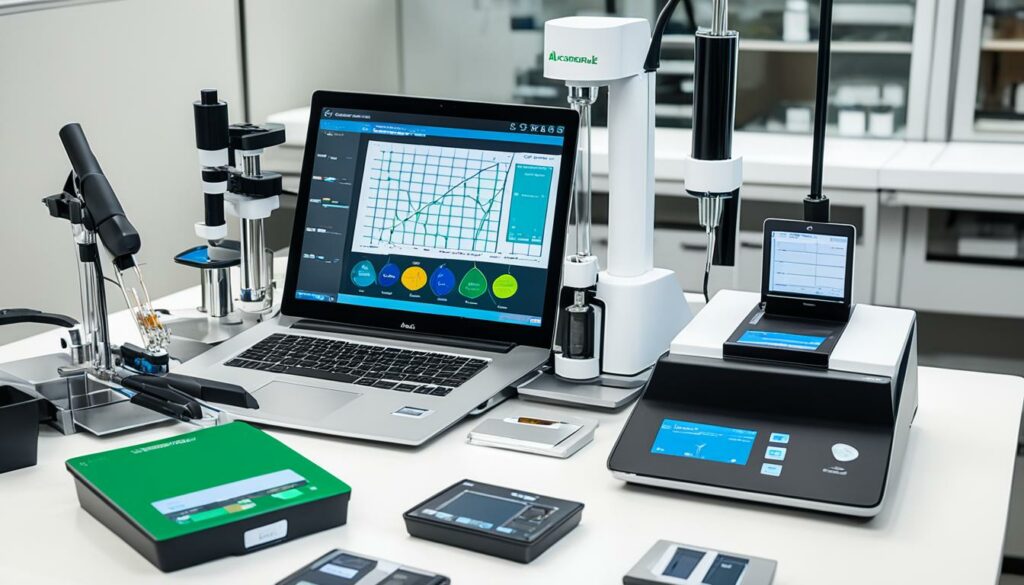
Good soil is full of organic matter, nutrients, and living organisms. Achieving this leads to better crop growth. Now, we have tools like sensors that can check soil conditions from afar. They can see the moisture, pH, and nutrients in the soil.
Take the SmartFarm kit, for example. It costs between US$200 to US$650 and gives detailed information about soil health. Also, drones with special cameras can take pictures of the land from above. This helps spot where the soil needs more nutrients.
Around the world, there are efforts to improve soil monitoring. For instance, Kenya and Morocco have started programs to get better data on soil and weather. This year, Ethiopia plans to launch its first satellite for the same reason. These steps show we’re using more technology to take care of soil.
Digital soil tools aren’t just good for the land; they can also make a farm more profitable. Farmers can use these tools to use fertilisers and other inputs more effectively. This means they waste less and spend less money on growing their crops.
There are now 535 startups worldwide working on new soil monitoring tech. They offer things like sensors, mapping, and aerial surveys. These tools help make farming more productive and sustainable.
| Startup | Innovative Technology | Country |
|---|---|---|
| Farmsys | Soil Spectra IoT Soil Monitoring Sensor | India |
| N-Sense | Fourier-Transform Infrared Spectroscopy Sensor | USA |
| SoilSerdem | Remote Sensing Techniques for Fertility Maps | USA |
| Map My Crop | Satellite-Based Soil Productivity Maps | USA |
| TerraRad by Swiss startup | Drone-Based Topsoil Monitoring with L-Band Radio Wave Antennas | Switzerland |
In summary, these new tools and platforms are changing the face of farming. They lead to smarter, more sustainable agriculture. This helps the soil and the farmers’ profits.
Precision agriculture is making big strides in field management. It’s changing farming by using technology for smart, data-driven decisions. With GPS, sensors, and data analysis, we’re improving how we grow crops, which boosts soil health.
Many projects in precision agriculture look into soil fertility and crop yields. For instance, some research links soil nutrients to crop yield, while other work studies using new tech in farming methods.
Soil samples show nutrients like phosphorus vary a lot across fields. This means one-size-fits-all soil sampling plans don’t work well. Yet, sampling based on the land’s features is proving to be a cost-effective method.
Tests with corn and soybeans found that not all fields benefit much from variable phosphorus fertilisation. It seems not all yield changes can be chalked up to soil nutrients. So, choosing the right fertilisation is key for each field.
Comparing on-farm results shows how well precision agriculture tech measures up. By using grid sampling and other tools, we can see the real impact of changes in different parts of a field.
In the end, there’s no one plan for soil and fertiliser that fits every field. Each plot is different and needs a specific strategy to make precision agriculture work. Data helps us adjust our farming to what each land piece needs.
Lately, agricultural practices have seen big changes thanks to new advancements in soil health technology. With tools like smart sensors, drones, and advanced software, farmers can now monitor soil better. This leads to more eco-friendly and innovative agricultural practices.
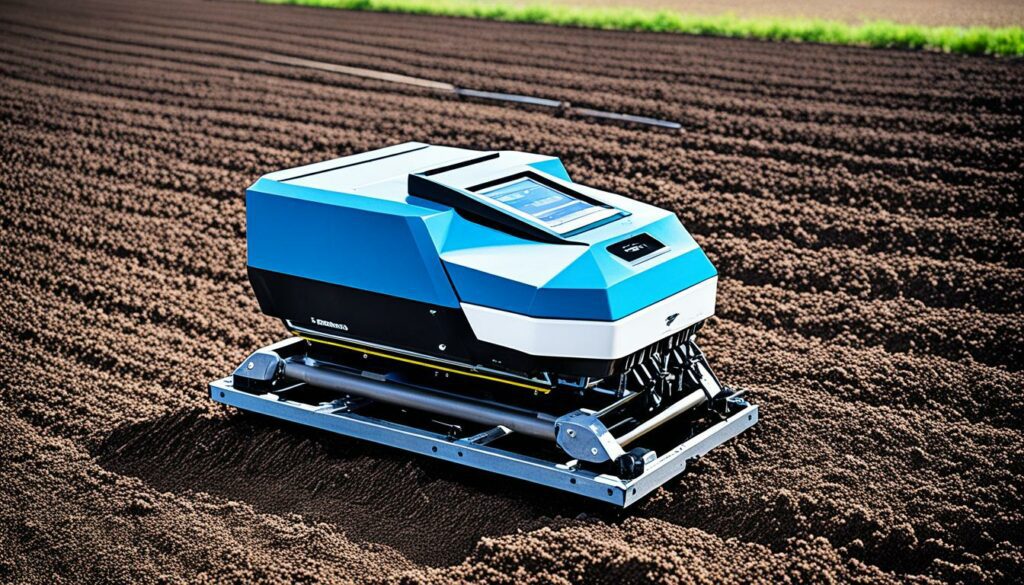
IoT technologies are making a big impact. They help understand the health of plants and soil. Using smart irrigation driven by IoT can reduce water use by up to 50%. This tech is a huge step for sustainable farming.
Drones and smart cameras are used more to take clear pictures of crops. These pictures help spot diseases, nutrient problems, and pests early. Early spotting means farmers can act fast, saving their crops and resources.
Machine-learning algorithms are also playing a vital role. They analyse data from sensors to give farmers useful advice. By studying weather, soil, and crop data, predictions about the health of plants and soil can be very accurate.
| Startup | Innovation | Country |
|---|---|---|
| Farmsys | Soil Spectra (IoT-based soil monitoring sensor) | India |
| N-Sense | Soil nitrate monitoring using FTIR spectroscopy | United States |
| SoilSerdem | Soil fertility maps using GIS-based mapping | United States |
| Map My Crop | Soil productivity maps from satellite measurements | United States |
| TerraRad | Topsoil monitoring with L-band radio wave antennas | Switzerland |
| Anton Tech | Soil carbon monitoring via drones and machine learning | Botswana |
| S-A-M Technologies | Automated soil monitoring robots with IoT sensors | Austria |
| Vertum Technologies | Robotic farming assistants for precision agriculture | United States |
Using these advanced technologies brings a host of benefits. It helps save resources, increase crop yield, and lessen environmental harm. With a growing population and climate change, our food production faces big challenges. Advancements in soil health technology are vital for a sustainable, strong future in farming.
Soil health systems help by keeping roots in the ground and limiting soil disruption. Nutrient software ensures just the right amount of nutrients for plants. This improves soil and stops overuse of fertilisers. It saves money and protects the environment.
Less soil disturbance lets natural soil structure improve rainwater soak and hold water better. Ground cover reduces water and nutrient loss. These benefits add up for farmers. Efficient fertilisation improves soil health for the long term.
| Practice | Benefit |
|---|---|
| Armouring Soil | Minimises disturbance and preserves soil structure |
| Plant Diversity | Reduces pest and disease pressure |
| Continual Live Plants/Roots | Enhances nutrient cycling |
| Integrating Livestock | Boosts soil biological activity |
In places like Minnesota and Wisconsin, researchers are looking into how soil principles affect water patterns. They check various soil health factors, including water status and indicators, on different farms. Monitoring soil down to 40 inches helps them see how water moves. This research aims to build important soil health data for future work.
Digital soil health platforms are changing the way we look after farm land. They connect easily with what farmers already use. They give up-to-the-minute info on soil, weather, and how well crops are doing. This data mix helps farmers to make smart, earth-friendly choices.
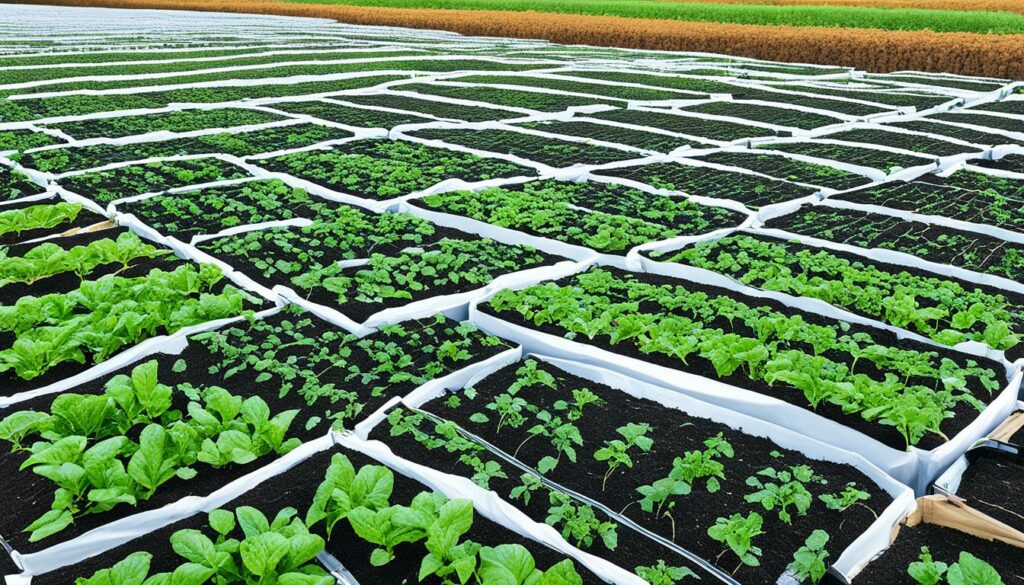
Digital soil platforms blend well with current farm tools. The Bin Buster project by Syngenta is a prime example. It uses high-tech gadgets to look deeply at a farm’s soil. These tools include sensors, probes, weather stations, and detailed images.
To get the full picture, soil from these farms is sent to top labs like Cornell University’s. They work with Syngenta’s products to boost soil health and crop yield. Their aim is to help farmers grow things better and more sustainably.
Let’s talk about Syngenta’s Seed Selector. It picked corn seeds that did better than others, sometimes by a lot. This shows how digital soil platforms can improve harvests with smart choices.
The USDA also backs these high-tech farm practices. Things like rotating crops, using covers, and managing nutrients are essential. These steps keep the soil healthy and help farms be kinder to the Earth. Digital platforms make it easier to follow these important guidelines.
In Africa, digital farming is also making a difference. It helps with planning, predicts how much we’ll harvest, and makes it easy to connect with buyers. This tech allows for quick changes as needed. Mobile phones are a key way to stay in touch and share info on the go.
These stories show how digital farm tools are changing the game. By using new tech alongside older ones, we can glean valuable tips for better farming. This leads to more sustainable, efficient, and Earth-friendly farms.
“Our adoption of digital technologies has not only improved soil health but also increased the profitability and resilience of our farming practices,” says a participant in the Bin Buster project. “The comprehensive data and real-time insights provided by these platforms are invaluable.”
Agronomic soil health innovations are changing farming for the better. They promote sustainable and regenerative ways of farming. The Nature Conservancy (TNC) has backed eight start-ups that focus on soil health. They encourage farmers to use cover crops more, till the land less, and rotate crops better. This support aims to make farming more profitable, keep the soil healthier, and protect the environment.
Some of the businesses TNC has helped are doing great work in this field:
Vence is also worth mentioning. Merck Animal Health bought this company in 2022. Vence focuses on managing livestock with high-tech fencing. Although it’s about animals, Vence’s work helps with soil care too.
| Company | Specialisation | Impact |
|---|---|---|
| FarmRaise | Financial Solutions | Facilitates adoption of regenerative practices |
| Growers Edge | Fintech Solutions | Improves farm profitability and sustainability |
| Kula Bio | Biological Fertilisers | Enhances nitrogen fixation |
| Pattern Ag | Soil Biology Analytics | Promotes effective farming practices |
| Sentera | Drone Technology | Improves crop health monitoring |
| Stony Creek Colors | Natural Indigo Production | Enhances soil fertility and plant diversity |
| SwarmFarm | Autonomous Machinery | Enhances precision in farm operations |
| Vence | Virtual Fencing | Improves land and livestock management |
By investing in technology, we can help farms treat the land better. This approach benefits water, the climate, wildlife, and the food we all depend on.
Cover crops are key in farming today for stopping soil erosion and boosting plant and animal variety. The Northeastern United States is now seeing more heavy rain, making cover crops crucial. They help lessen soil erosion and stop nutrients from washing away.
This is important because too much rain in spring and fall means less time to work the fields. Cover crops keep the soil healthy when the land is otherwise bare. They increase the amount of organic matter in the soil, make it more fertile, and help it hold onto moisture.
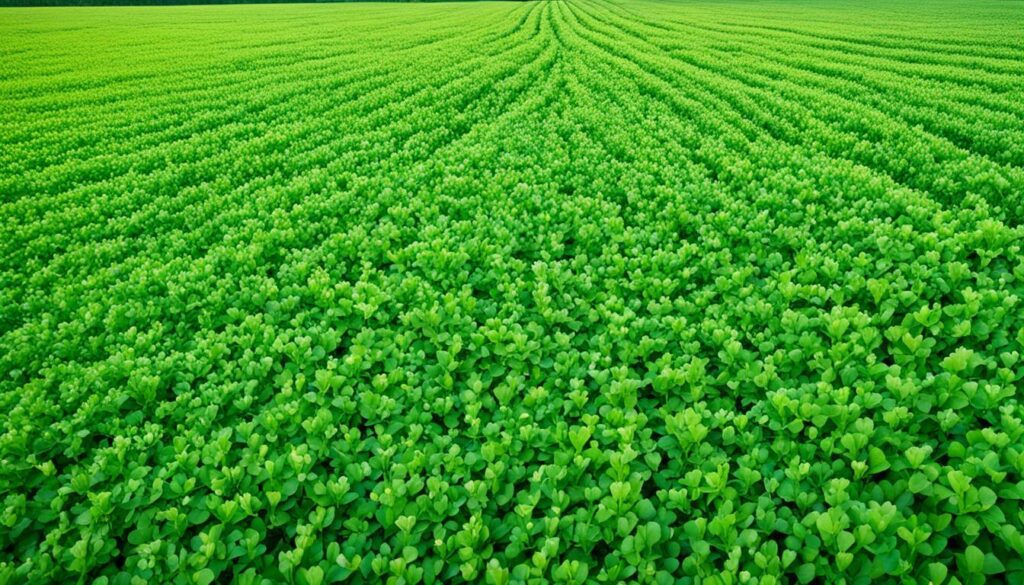
Cover crops also keep the soil from washing away and help the soil soak up water better. This stops pollution of rivers and lakes. They make the soil stick together better, so it doesn’t wash or blow away easily.
They are also great for wildlife. Cover crops scare off harmful bugs, welcome good bugs, and draw in bees and butterflies. They help build a strong, diverse ecosystem. Cover crops also lessen soil squeezing and make sure nutrients move around well by adding organic stuff to the soil.
Yes, planting cover crops costs money, but they save a lot in the long run. They make more crops, reduce the need for machines, keep weeds down, and cut back sickness in plants and bugs. Cover crops are good at grabbing extra nutrients and giving animals something to eat, making farms run better and last longer.
But there are problems too, like some crops using up nitrogen or drying the soil out for the next planting. So, which cover crops to sow depends on what the farm needs. Do you need them to catch extra nutrients, help out the soil’s compost, or bring in more types of plants and animals?
Recent studies found that planting cover crops in corn fields can bump up the soil’s carbon by 7.3%. Imagine, this can offset as much as the yearly emissions from about 247.5 million barrels of oil! Cover crops also have been shown to help grow corn better by 23%. This proves their major role in making farming more sustainable.
In a nutshell, using cover crops is crucial in farming to beat erosion, boost life variety, and better the soil. Starting with small steps and growing from there is the best way for new farmers to get the most out of cover crops.
By 2050, we expect the global population to hit 10 billion. This means we must increase agricultural production by 70%. Autonomous farming technologies can help with this big challenge. They are changing how we farm, making it more efficient and effective. The use of robot tractors and drones in farming is a big step forward.
There are many benefits to using autonomous farming technologies. Right now, over 50% of what farms spend goes on labour costs. However, 55% of farmers find it hard to get enough workers. As a result, 31% have switched to less labour-intensive crops. Robotic technology can really help with this problem. For instance, one strawberry-picking robot can do the work of 30 people. It can harvest a field of 25 acres in just three days.
These technologies also play a key role in making farming more environmentally friendly. Weeding robots, for example, can lower pesticide use by 90%. Precision farming saves both water and energy. The use of these tools can also reduce the need for chemicals in soil and water by 70%. This makes farming greener and more sustainable.
Many companies are putting more money into developing agricultural robotics. They are looking into drones, self-driving tractors, and ways to automate harvesting. The market for AI in agriculture is set to jump from USD 1.7 billion in 2023 to USD 4.7 billion by 2028. This shows how quickly the industry is growing.
Autonomous farming technologies have the power to make farms more efficient, productive, and eco-friendly. These changes help increase both the amount and the quality of the crops. They also deal with the ongoing problem of not having enough workers in farming.
| Benefit | Impact |
|---|---|
| Labour Cost Reduction | Eliminates cost of hiring, training, wages, and benefits |
| Environmental Sustainability | Reduces harmful chemical use, conserves water and soil |
| Increased Efficiency | Allows precise application of inputs, improving yields |
| Enhanced Crop Quality | Optimises harvest times, improving crop health |
Financial help is crucial for farmers to go green. It covers the cost gaps and lets them switch to eco-friendlier ways. Both the government and private investors make this possible. They aim for long-term change that is good for the earth and income too.
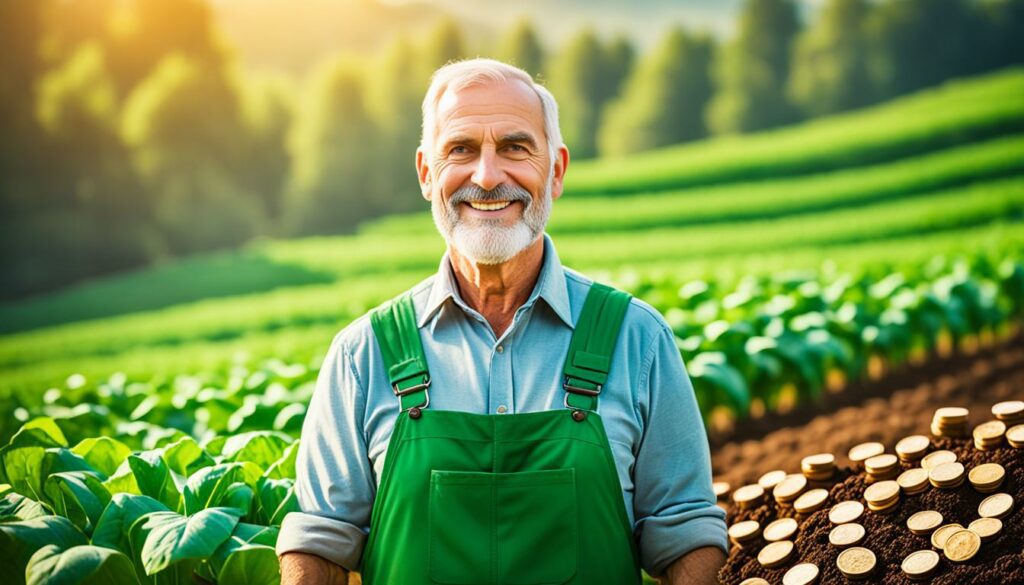
Govt. programs help farmers a lot, especially after COVID-19. Small farmers face a big money problem, which got worse due to the virus. The Inflation Reduction Act (IRA) steps in to help farms. It does things like:
Private investors also put money in green farming. Companies like FarmRaise help by providing advanced farming tech. These investments are a win-win. For every dollar spent on farm research, we get back at least $6. Such efforts support not just local farmers but also those in poor countries needing help for climate change.
“The climate crisis could potentially reduce the global crop yield by 20% by 2050, making financial assistance an urgent necessity.” – Agricultural Economist
Many people in the world’s poorest areas rely on farming. They face the brunt of not having enough aid. Industrial farming’s impact shows we need a big change in how we support farmers. Financial aid is key. It’s not just help; it’s what will make farming sustainable and strong for the future.
Our journey taught us that using advanced soil technology is key for farming’s future. Practices like no-till farming and varied crops boost soil health. They also help more carbon stay in the ground, fighting climate change.
Keeping roots healthy and soil covered are vital in eco-friendly farming. This stops soil from getting worse and nutrients from disappearing. It means we can protect the tiny life in the soil. Less tilling keeps soil life safe, helping to avoid species dying out and keep more plants and animals living.
Today, high-tech tools help us understand soil and nutrients better. This lets us use resources wisely, benefiting our wallets and our planet. These tools show farming can remove more carbon than it adds and make soil healthier every year. By using these tools and looking after our soil well, we can produce food sustainably and make our environment stronger.
Soil health technology is a bunch of tools and methods to look after, check, and better soil condition. It includes things like sensors, digital soil analysis, and software to manage nutrients. These things help farming be more sustainable and healthy for the earth.
Regenerative soil systems help protect our planet. They store carbon, cut down on greenhouse gases, make water cleaner, and give homes to pollinators. These methods also make soil better for plants by enhancing its structure and nutrients. This helps fight droughts and plant diseases.
Healthy soil is key for sustainable farming. It keeps water, nutrients, and life-cycle flowing right. This means more and healthier crops, which keeps us and nature happy. Also, it supports many environmental benefits.
There are simple kits to complex sensors for checking soil quality. They look at things like moisture and nutrients in the soil. With real-time data, farmers can fine-tune how they treat their soil. This leads to better crops and care for nature.
Good soil management is about things like changing crops, not tilling too much, and using natural changes. These methods keep the soil rich and protect it, helping nature to flourish.
These tools give farmers a deep look into what the soil needs. This lets farmers use fertilisers and other things exactly where they’re needed. The result is healthier soil and savings for the farmer and the planet.
Precision farming uses data and tech to make smart choices about crops. It aims to use resources wisely, helping the soil and the farm work better. This smart approach promotes soil health and efficient farming.
Lately, we’ve seen smart sensors, flying drones, and special software for soil. These new tools make farming more eco-friendly and efficient. They help farmers grow more while using less resources and cutting down on waste.
This software helps farmers give their crops the exact nutrients they need. It stops overdoing it. This means a balanced use of resources, saving money and helping the environment.
These platforms collect lots of data about soil, weather, and how crops are doing. They give farmers tips in real time to make better sustainable choices. This helps with farming smarter and getting better yields.
These innovations, like special seeds and natural fertilisers, make the soil and farms healthier. They’re proven to boost crops and make farms more resilient to changes. They’re a win for the environment and for farmers.
Cover crops are very important for the soil. They stop erosion, make the soil itself better, and welcome more life. They are a must for keeping the farm and the earth healthy for the long term.
New tech, like flying drones and robots on the farm, make applying things to the soil much more precise. They help in managing the soil well, making farms more productive and the soil healthier.
Money help from governments and private investors is key for farmers to go the sustainable route. This support makes it easier to use soil health technology. It boosts profits while being kinder to the earth.